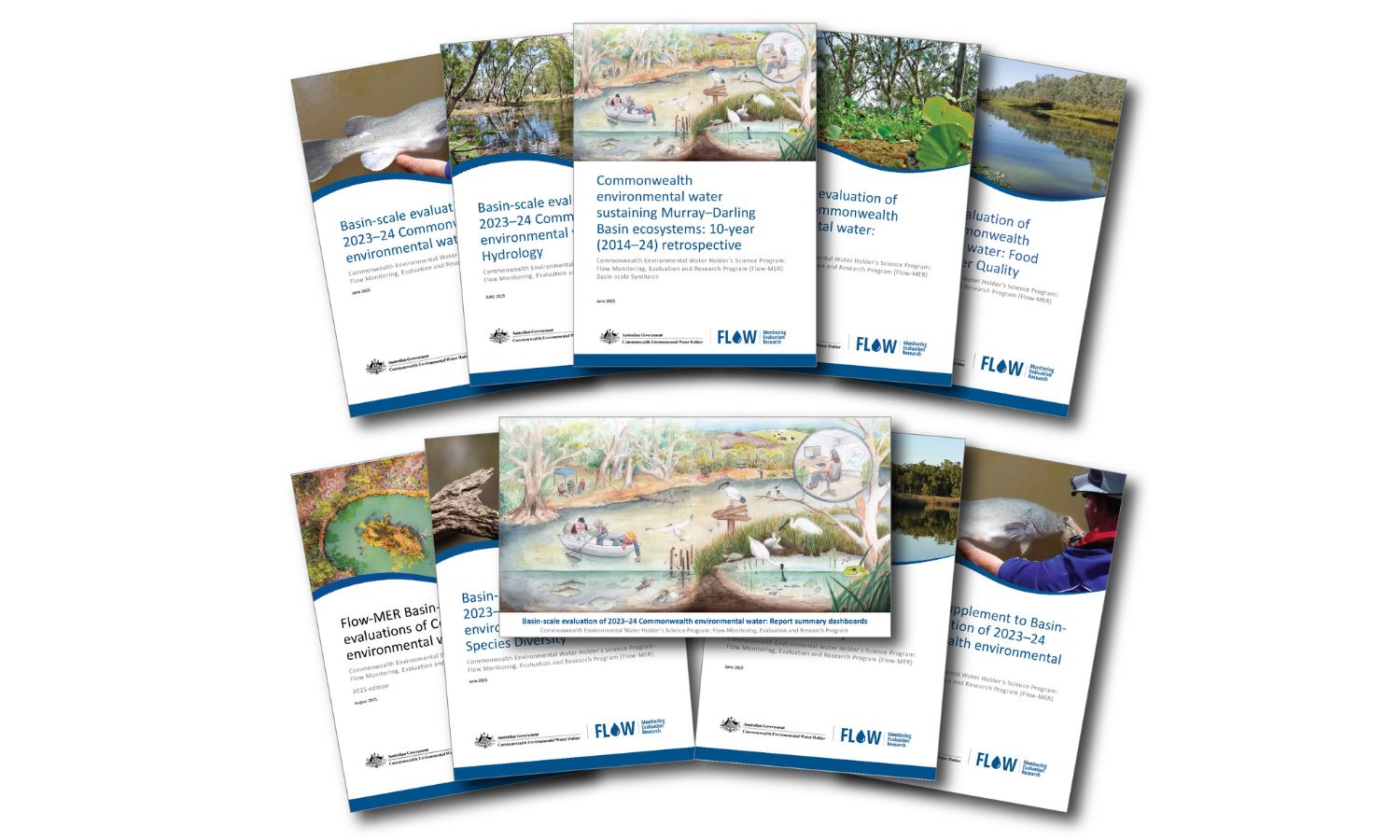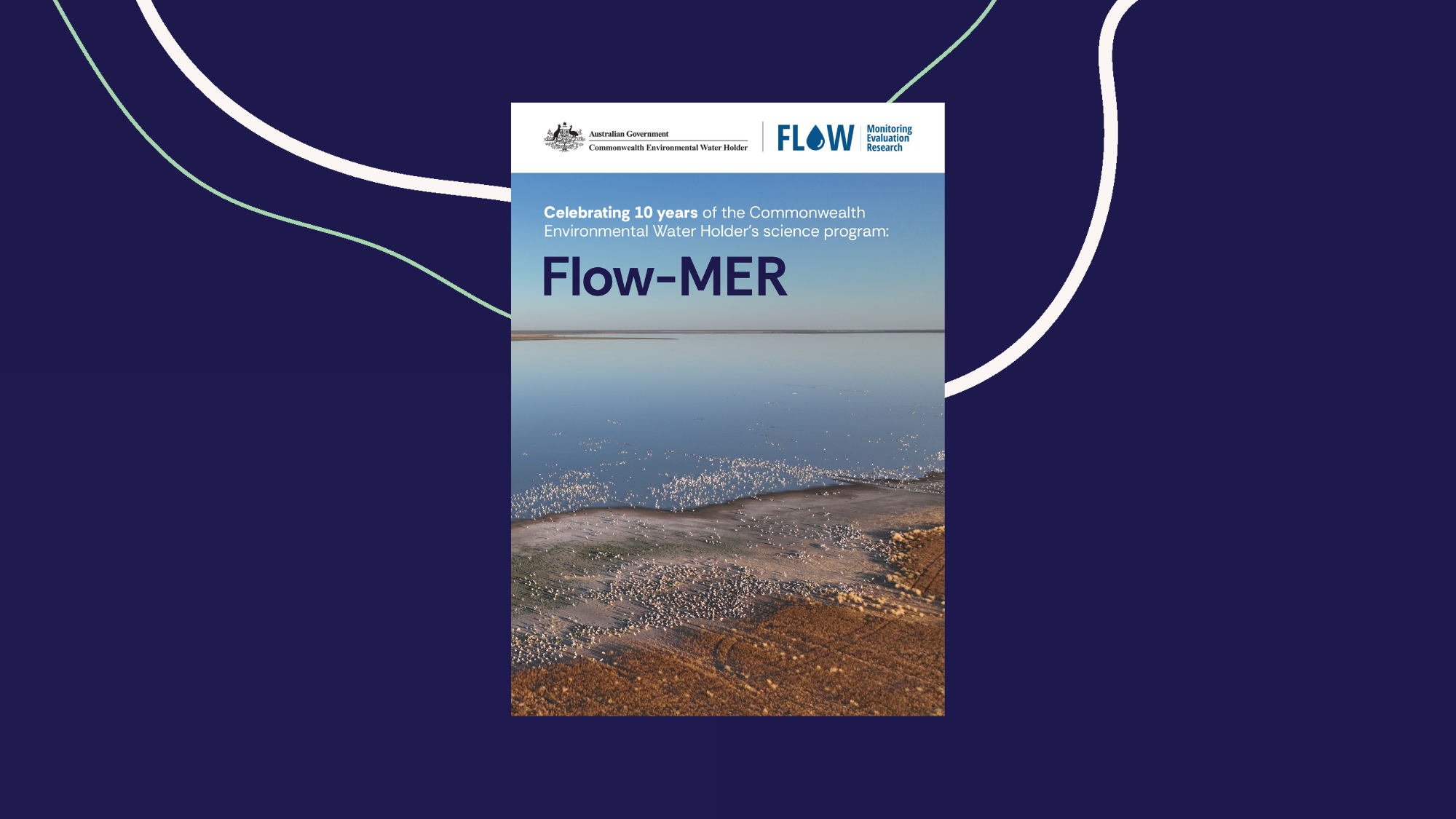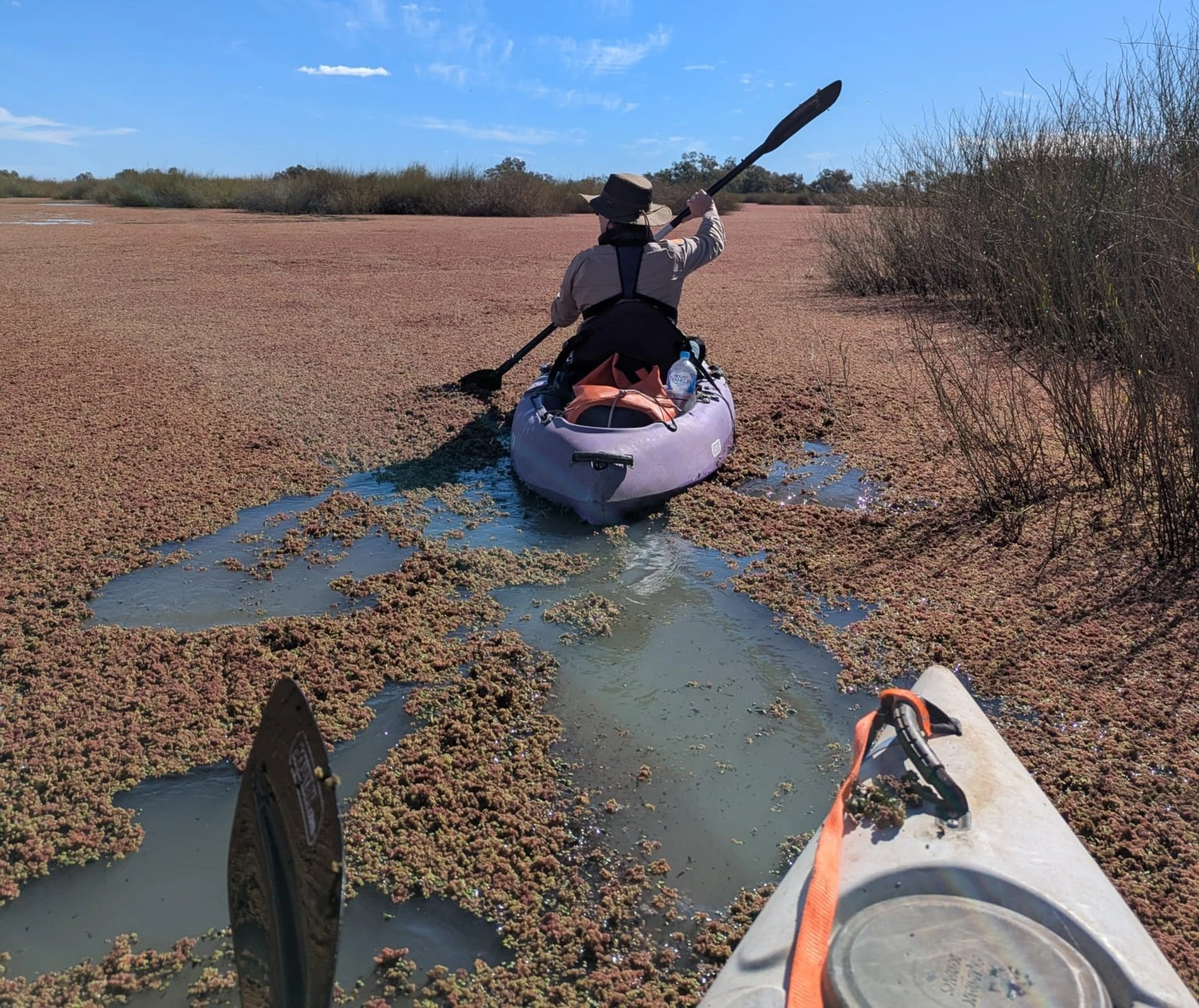The suite of 2023–24 evaluation reports is now available. Among the reports is a retrospective synthesis of the 10 years of Commonwealth environmental water (CEW) delivery and its impact across the Murray–Darling Basin.
Together, these insights underscore the importance of adaptive management, science underpinning decision-making, and the role of collaboration in securing the Basin’s environmental future.
Read all the reports at the CEWH website, or follow the links below directly to the reports.
10-year Synthesis Retrospective
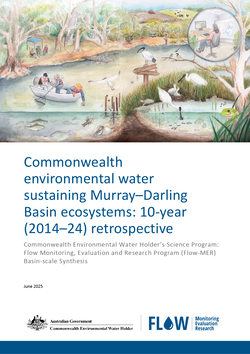
A decade of Commonwealth environmental water (CEW) delivery has shown:
- Adaptive management is essential: The ability to respond flexibly to climatic variability, water management priorities and emerging knowledge underpins the success of water delivery strategies.
- Integration of science and Indigenous knowledge: Combining scientific monitoring with Indigenous knowledge systems enriches understanding, paving the way for more holistic water management.
- Targeted watering of key sites: Prioritising floodplain–wetland locations, important for sustaining biodiversity, maximises the ecological return of environmental water investments.
- Leveraging natural events: Responding to wet and dry cycles amplifies positive outcomes for fish, birds, and vegetation, while strategic interventions during dry periods maintain critical refuges.
- Closing knowledge gaps: Identifying ‘blind spots’ in ecological monitoring and investing in research enhance our ability to address unmet needs of threatened species and habitats.
Read the 10-year synthesis retrospective
Hydrology
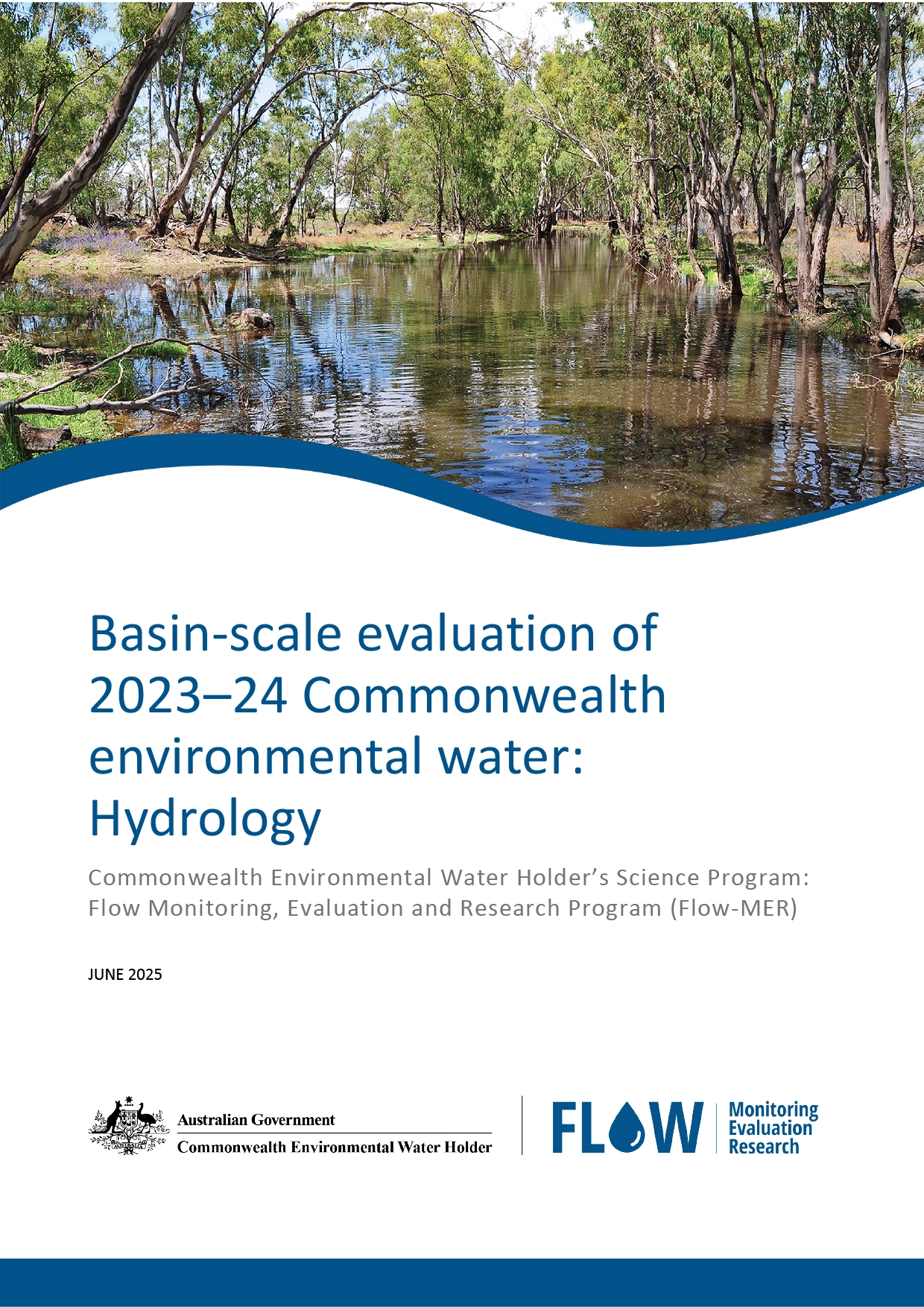
The Hydrology evaluation revealed that CEW delivery reached its highest volume in a decade – 2,870 GL – despite average rainfall. CEW improved base flows, freshes and connectivity across 21,075 km of waterways and 272,000 ha of floodplains, wetlands and estuaries. Notable contributions included supporting Narran Lakes and Macquarie Marshes. Over 10 years, CEWH has delivered 18,310 GL through 1,194 actions, enhancing ecological resilience and aligning flows more closely with natural regimes. The report underscores CEW’s strategic role in sustaining the Basin’s hydrology under changing climate conditions.
Species Diversity
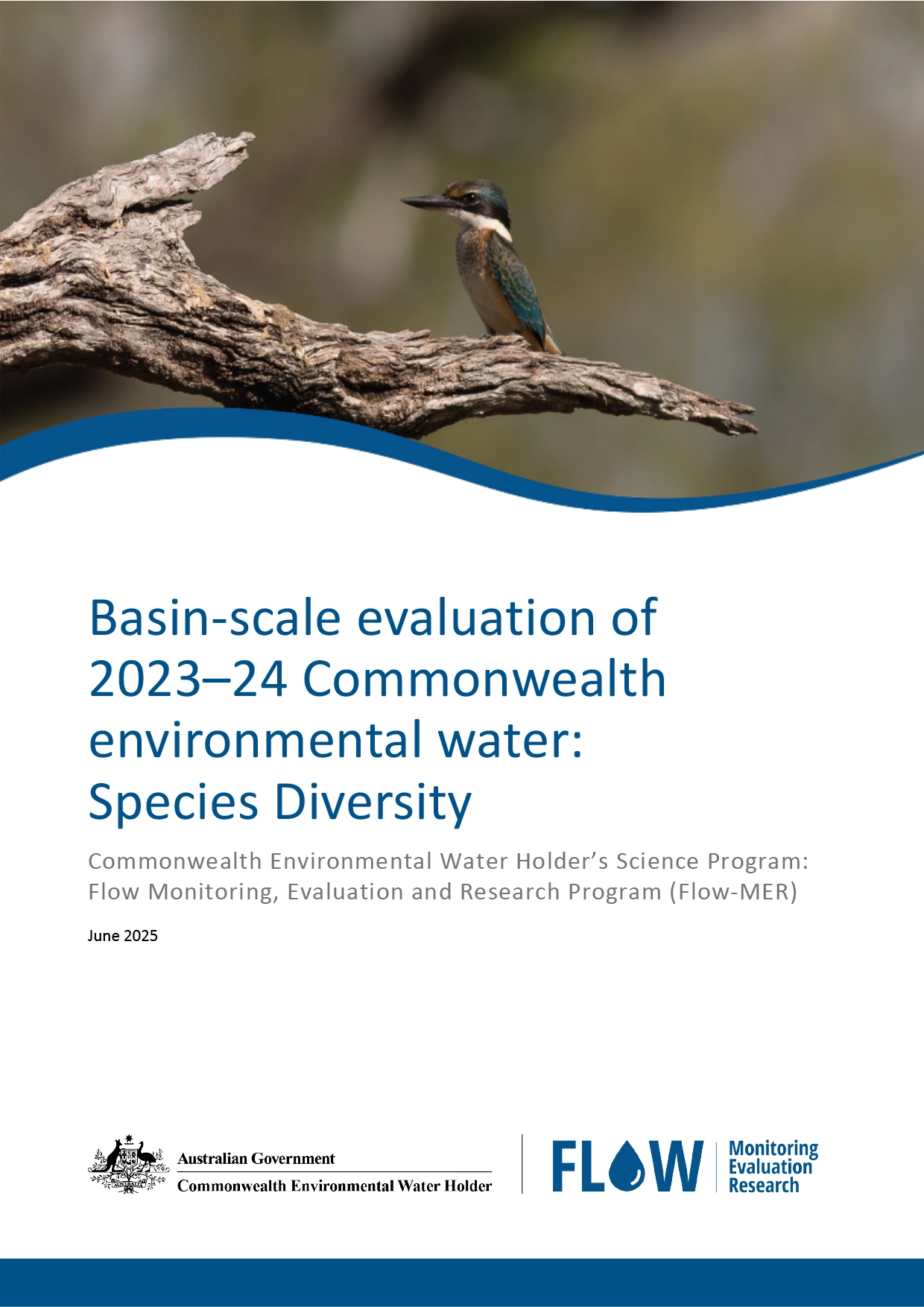
The Species Diversity evaluation highlighted the positive impact of CEW on frogs, waterbirds and threatened species across the Basin. Over 2,324 GL was delivered for species diversity, supporting 68 waterbird species (including 11 of conservation significance), 11 frog species and numerous threatened and migratory species. Notable outcomes include successful breeding events for pelicans and southern bell frogs, and improved habitats for listed birds such as the Australasian bittern. The report affirms the importance of targeted watering and ongoing monitoring to sustain and restore biodiversity in Basin ecosystems.
Read the Species Diversity report
Food Webs and Water Quality
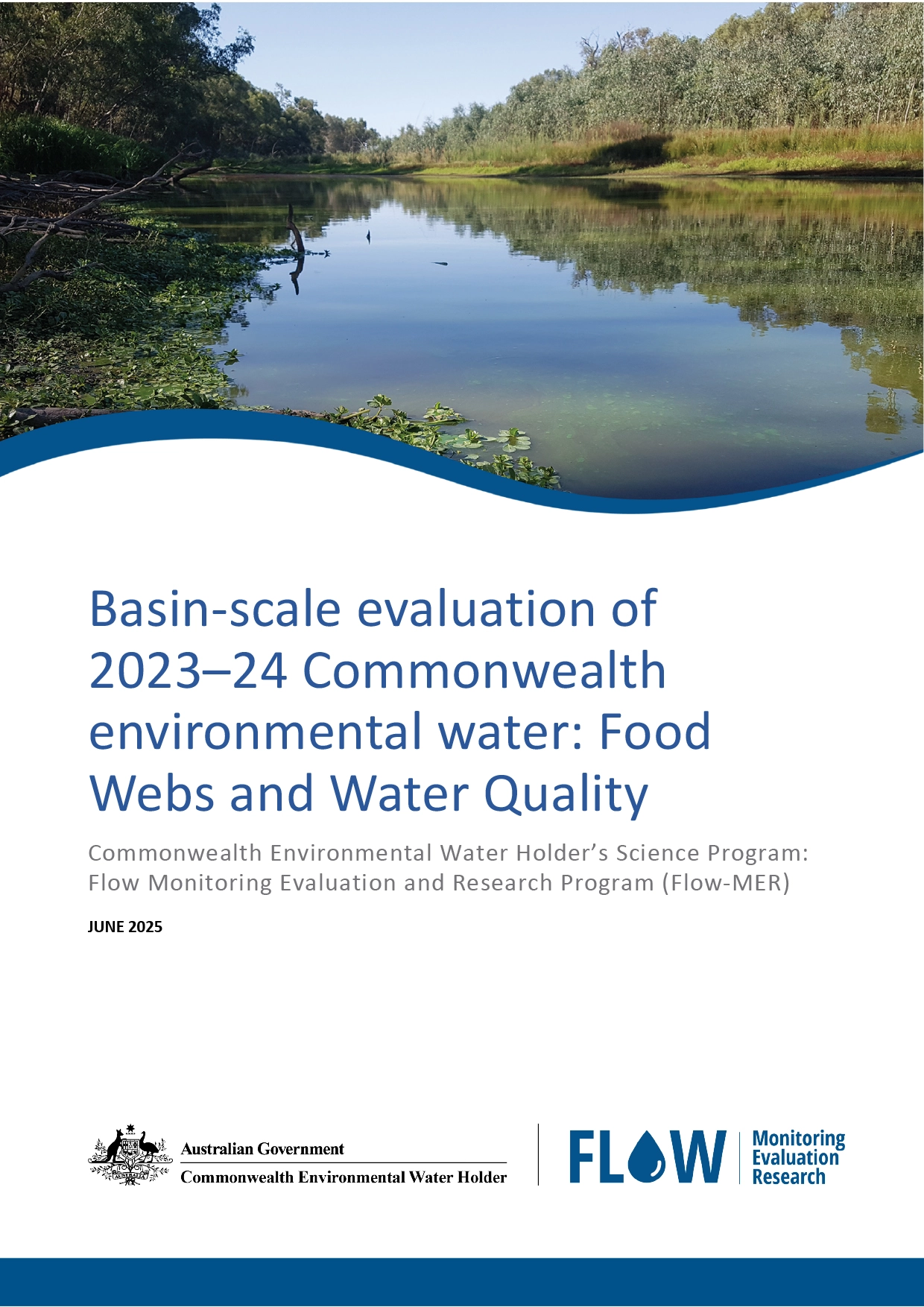
The Food Webs and Water Quality evaluation showed how CEW shaped ecological processes across the Basin. In 2023–24, environmental flows helped export over 220,000 tonnes of salt, reduced the risk of hypoxic events, and supported ecosystem respiration in key river systems. Most sites remained net carbon consumers, highlighting the importance of floodplain connectivity. New modelling showed that environmental water typically reduced algal growth during low flows, improving water quality. These insights will guide future flow management to better support biodiversity, ecosystem function and resilience across the Basin.
Read the Food Webs and Water Quality report
Vegetation
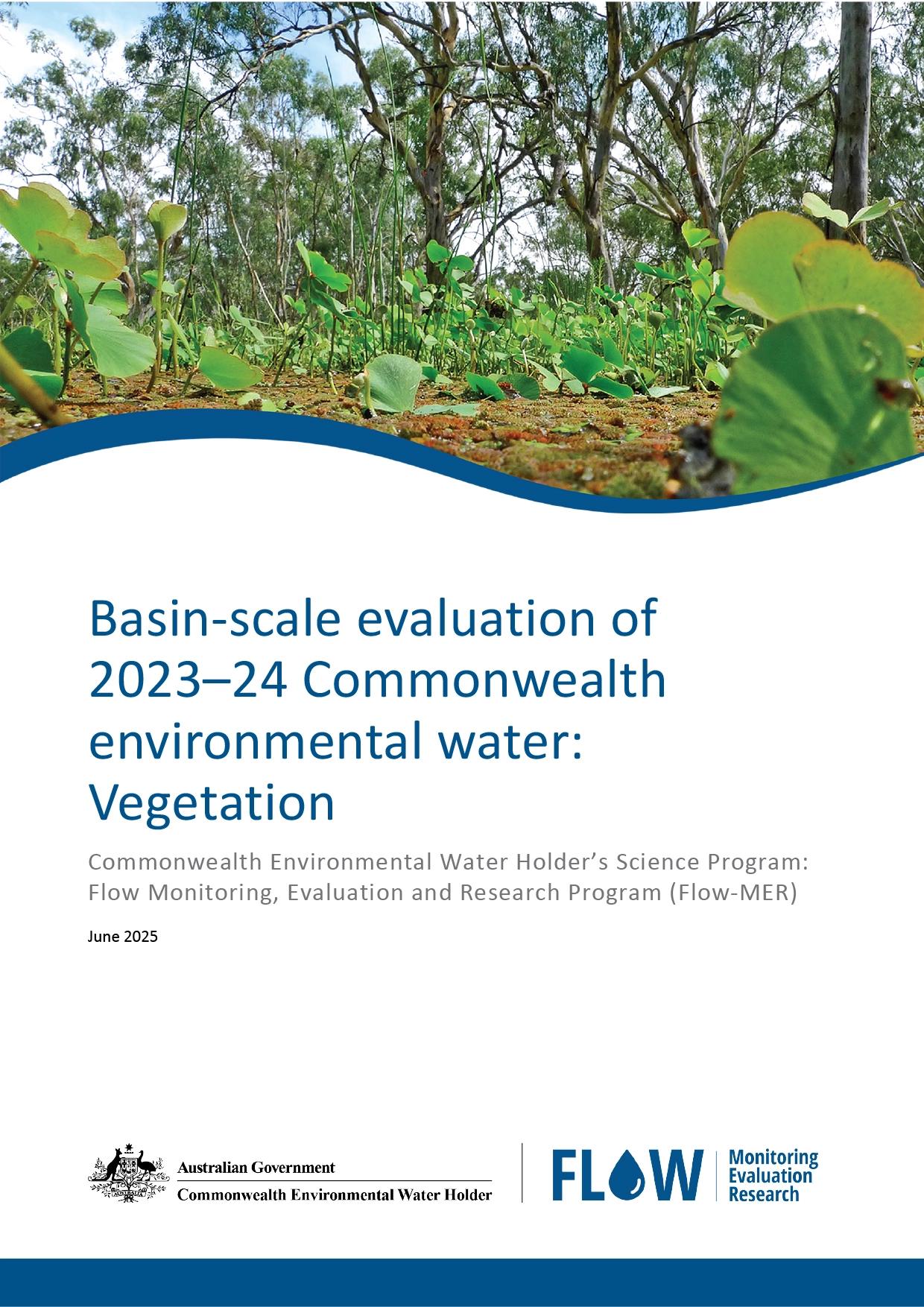
The Vegetation evaluation showed how CEW continued to support plant diversity and ecosystem resilience across the Basin. Of 804 plant taxa recorded since 2014, 360 were observed this year, including 54 culturally significant species used by Aboriginal people. Environmental watering helped maintain wetter regimes, boosting submerged and amphibious plant cover and preventing transitions to drier vegetation communities. Without this water, 40% of monitored sites would have seen significant declines. These insights guide adaptive management and reaffirm the importance of strategic watering to sustain biodiversity and cultural values.
Fish
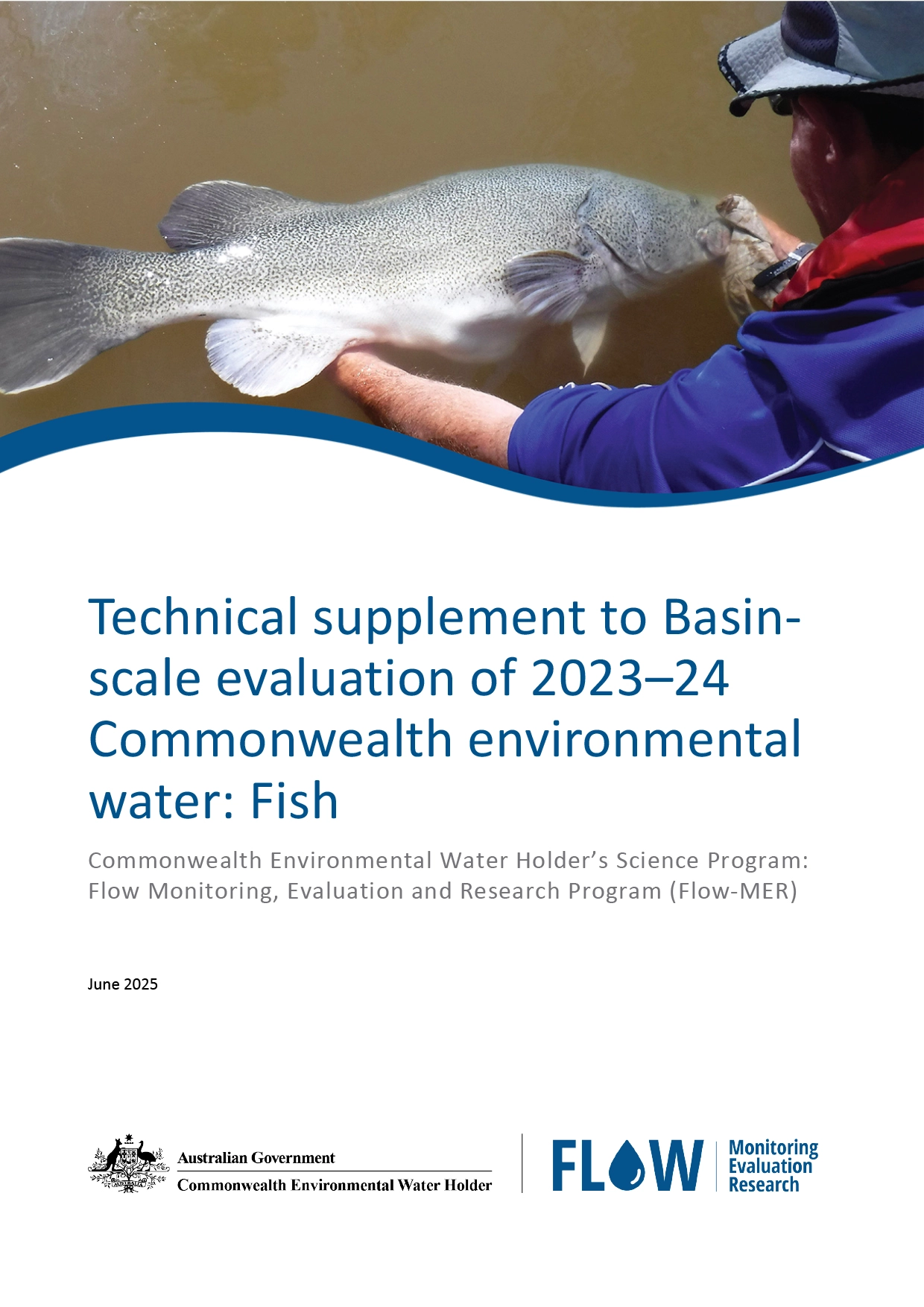
The Fish evaluation revealed that CEW continued to play a vital role in sustaining native fish populations across the Basin. Despite a return to drier conditions, targeted water deliveries improved habitat, connectivity and supported critical life stages for species such as golden perch, Murray cod and Australian smelt. While recruitment for some large-bodied fish remained low, positive outcomes were observed for small-bodied native fish. The program’s 10-year data shows environmental water boosts spawning, recruitment, and fish health, helping to maintain biodiversity and support Basin Plan objectives. Ongoing adaptive management is recommended to address emerging challenges and maximise ecological benefits.
Ecosystem Diversity
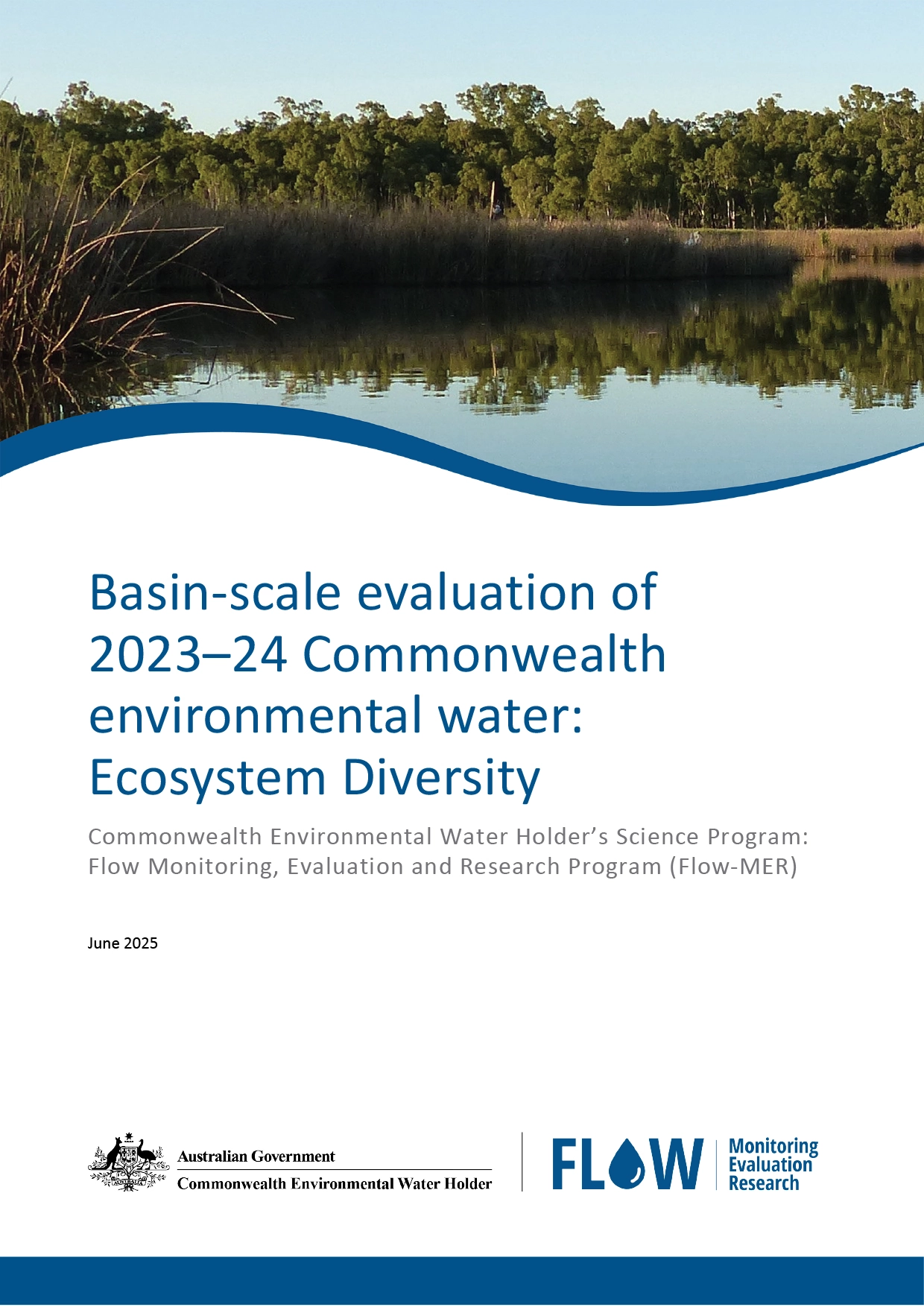
The Ecosystem Diversity evaluation highlighted the vital role of CEW in supporting a wide range of aquatic habitats across the Basin. In the past year, environmental water benefited 52 aquatic ecosystem types – covering 200,890 hectares of lakes and wetlands, 47,770 hectares of floodplain and 21,075 km of rivers. Watering actions supported critical habitats in 8 Ramsar-listed wetlands, helping maintain ecological character and biodiversity. Over the past decade, 56 ecosystem types have been supported, demonstrating that environmental water management is responsive, adaptive and crucial for protecting the Basin’s unique aquatic environments and meeting Basin Plan objectives.
Read the Ecosystem Diversity report
Methods
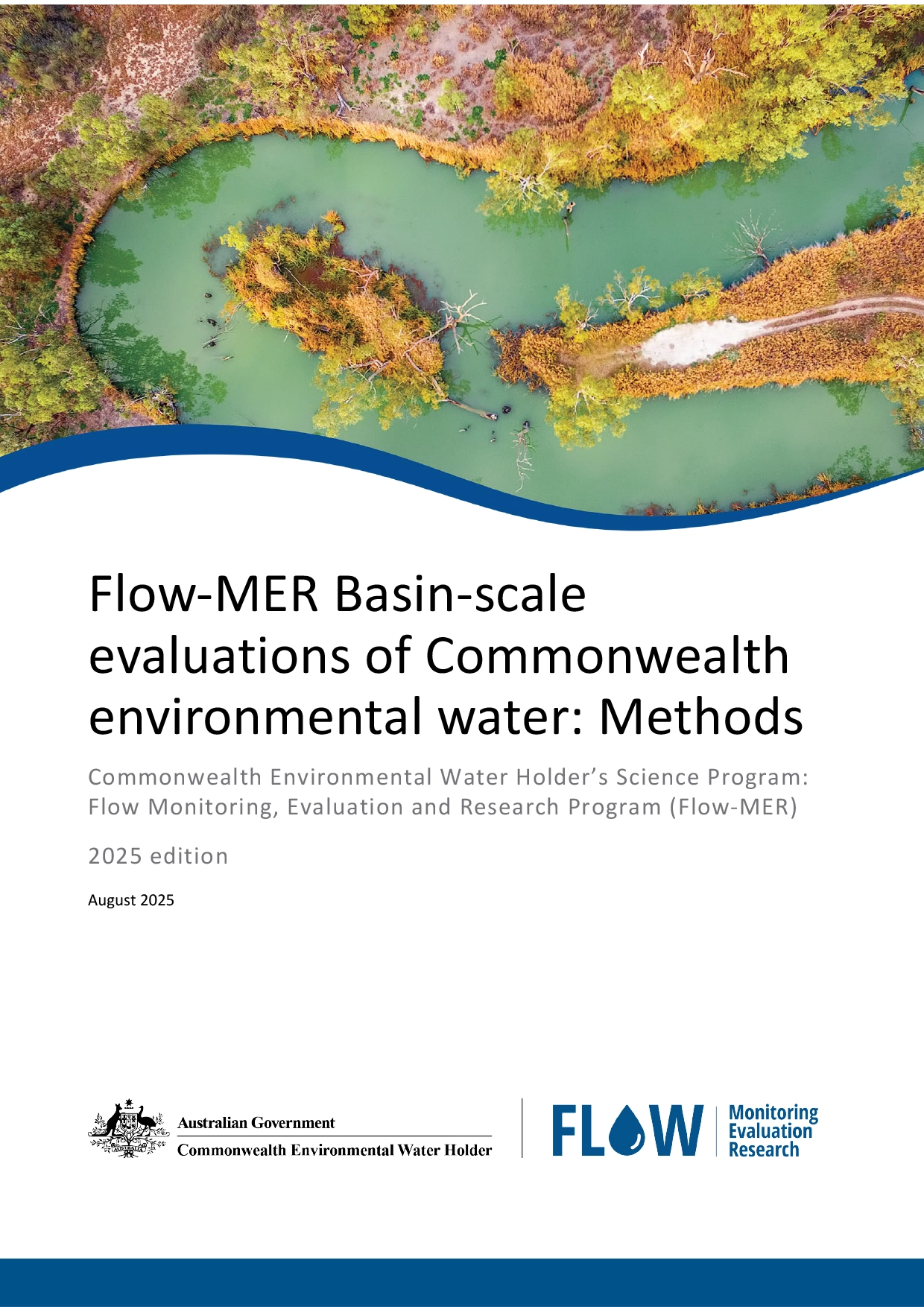
The 2025 edition of the evaluation methods report outlines the scientific approaches used to assess the impact of CEW across the Basin. Covering the 6 Themes as well as the foundation datasets, the report details updated modelling techniques, data sources and evaluation frameworks. It highlights advances in counterfactual modelling, machine learning for threatened species, and metabolic fingerprinting to assess stream productivity. These methods underpin robust, adaptive evaluations that inform water management decisions and support ecological outcomes across the Basin.
Read the Evaluation Methods report
Summary Dashboards and Key Metrics
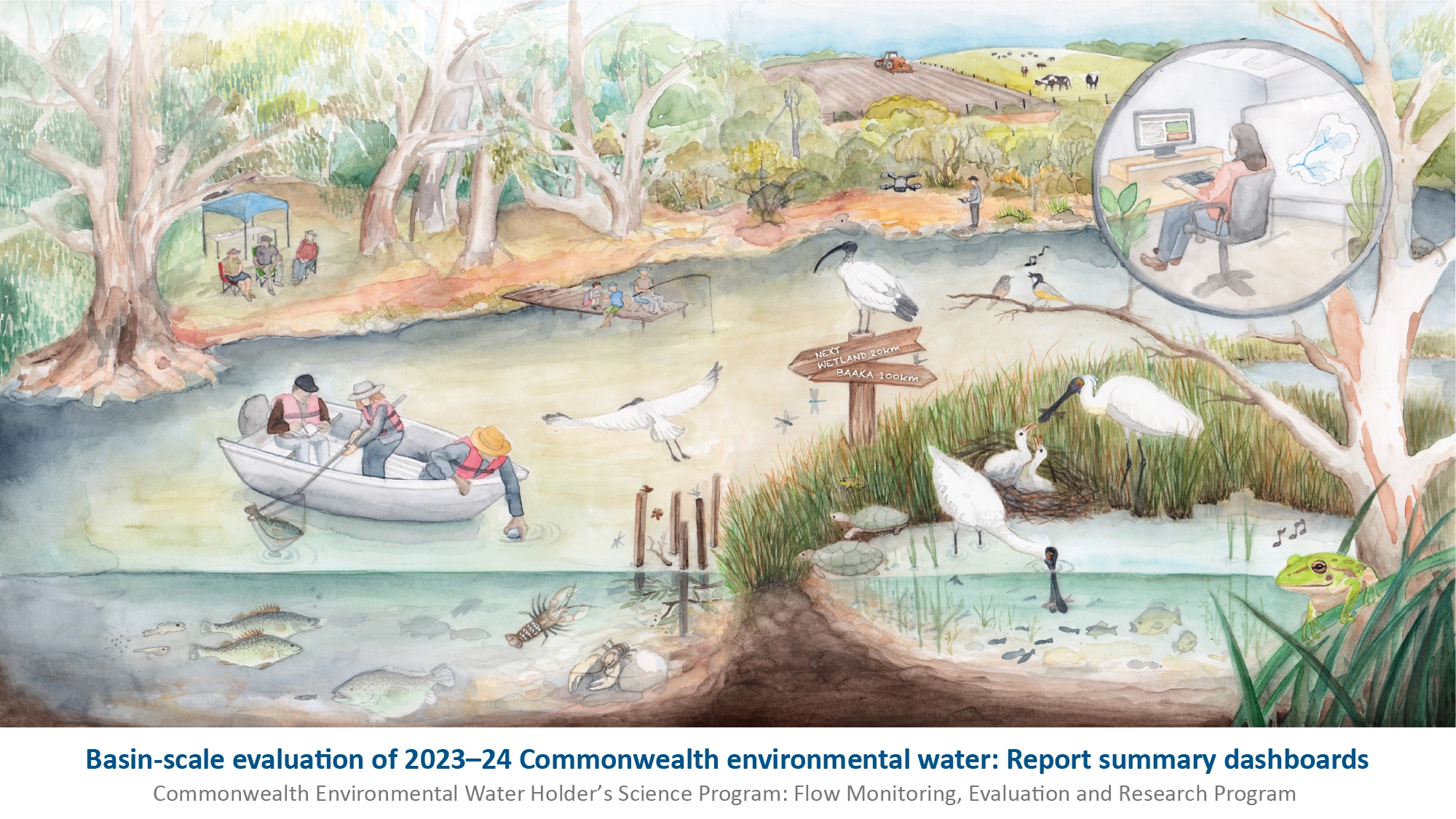
The summary dashboards and key metrics for the 2023–24 evaluation provides an easy-to-interpret dashboard and table for each Theme, showing volume of CEW and number of watering actions delivered with outcomes expected, and a map of which valleys received CEW.
Read the Summary Dashboards and Key Metrics for the 2023–24
Fish Supplement

The Fish Supplementary report provides details of the modelling on which the Fish evaluation is based.
The suite of 2023–24 evaluation reports is now available from the CEWH website! The 10 reports are the final evaluation for the previous iteration of Flow-MER. The Basin-scale Project undertakes the evaluation every year for every Theme. In addition, the team produces summary dashboards, key metrics and a synthesis report – which is a retrospective on the last 10 years of Flow-MER monitoring.

